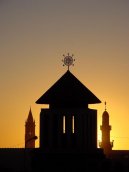Eritrea
Eritrea: Travel tips, articles, photos, gallery, cities database, population, pics, flags, statistics, free maps online
Back to Countries, Click to read the whole article: Eritrea
| Introduction - Eritrea: | | Location - Eritrea: | | People - Eritrea: | | Government - Eritrea: | Country name | conventional long form: State of Eritrea
conventional short form: Eritrea
local long form: Hagere Ertra
local short form: Ertra
former: Eritrea Autonomous Region in Ethiopia | | Government type | transitional government
note: following a successful referendum on independence for the Autonomous Region of Eritrea on 23-25 April 1993, a National Assembly, composed entirely of the Peoples Front for Democracy and Justice or PFDJ, was established as a transitional legislature; a Constitutional Commission was also established to draft a constitution; ISAIAS Afworki was elected president by the transitional legislature; the constitution, ratified in May 1997, did not enter into effect, pending parliamentary and presidential elections; parliamentary elections were scheduled in December 2001, but were postponed indefinitely; currently the sole legal party is the Peoples Front for Democracy and Justice (PFDJ) | | Capital | name: Asmara (Asmera)
geographic coordinates: 15 20 N, 38 56 E
time difference: UTC+3 (8 hours ahead of Washington, DC during Standard Time) | | Administrative divisions | 6 regions (zobatat, singular - zoba); Anseba, Debub (Southern), Debubawi Keyih Bahri (Southern Red Sea), Gash Barka, Maakel (Central), Semenawi Keyih Bahri (Northern Red Sea) | | Independence | 24 May 1993 (from Ethiopia) | | National holiday | Independence Day, 24 May (1993) | | Constitution | a transitional constitution, decreed on 19 May 1993, was replaced by a new constitution adopted on 23 May 1997, but not yet implemented | | Legal system | primary basis is the Ethiopian legal code of 1957, with revisions; new civil, commercial, and penal codes have not yet been promulgated; government also issues unilateral proclamations setting laws and policies; also relies on customary and post-independence-enacted laws and, for civil cases involving Muslims, Islamic law; does not accept compulsory ICJ jurisdiction | | Suffrage | 18 years of age; universal | | Executive branch | chief of state: President ISAIAS Afworki (since 8 June 1993); note - the president is both the chief of state and head of government and is head of the State Council and National Assembly
head of government: President ISAIAS Afworki (since 8 June 1993)
cabinet: State Council is the collective executive authority; members appointed by the president
elections: president elected by the National Assembly for a five-year term (eligible for a second term); the most recent and only election held 8 June 1993 (next election date uncertain as the National Assembly did not hold a presidential election in December 2001 as anticipated)
election results: ISAIAS Afworki elected president; percent of National Assembly vote - ISAIAS Afworki 95%, other 5% | | Legislative branch | unicameral National Assembly (150 seats; members elected by direct popular vote to serve five-year terms)
elections: in May 1997, following the adoption of the new constitution, 75 members of the PFDJ Central Committee (the old Central Committee of the EPLF), 60 members of the 527-member Constituent Assembly, which had been established in 1997 to discuss and ratify the new constitution, and 15 representatives of Eritreans living abroad were formed into a Transitional National Assembly to serve as the countrys legislative body until countrywide elections to a National Assembly were held; although only 75 of 150 members of the Transitional National Assembly were elected, the constitution stipulates that once past the transition stage, all members of the National Assembly will be elected by secret ballot of all eligible voters; National Assembly elections scheduled for December 2001 were postponed indefinitely | | Judicial branch | High Court - regional, subregional, and village courts; also have military and special courts | | Political parties and leaders | Peoples Front for Democracy and Justice or PFDJ [ISAIAS Afworki] (the only party recognized by the government); note - a National Assembly committee drafted a law on political parties in January 2001, but the full National Assembly has not yet debated or voted on it | | Political pressure groups and leaders | Eritrean Islamic Jihad or EIJ (also including Eritrean Islamic Jihad Movement or EIJM (also known as the Abu Sihel Movement)); Eritrean Islamic Salvation or EIS (also known as the Arafa Movement); Eritrean Liberation Front or ELF [ABDULLAH Muhammed]; Eritrean National Alliance or ENA (a coalition including EIJ, EIS, ELF, and a number of ELF factions) [HERUY Tedla Biru]; Eritrean Public Forum or EPF [ARADOM Iyob]; Eritrean Democratic Party (EDP) [HAGOS, Mesfin] | | International organization participation | ACP, AfDB, AU, COMESA, FAO, G-77, IAEA, IBRD, ICAO, ICCt (signatory), IDA, IFAD, IFC, IFRCS (observer), IGAD, ILO, IMF, IMO, Interpol, IOC, ISO (correspondent), ITU, ITUC, MIGA, NAM, OPCW, PCA, UN, UNCTAD, UNESCO, UNIDO, UNWTO, UPU, WCO, WFTU, WHO, WIPO, WMO | | Diplomatic representation in the us | chief of mission: Ambassador GHIRMAI Ghebremariam
chancery: 1708 New Hampshire Avenue NW, Washington, DC 20009
telephone: [1] (202) 319-1991
FAX: [1] (202) 319-1304
consulate(s) general: Oakland (California) | | Diplomatic representation from the us | chief of mission: Ambassador Scott H. DELISI
embassy: 179 Alaa Street, Asmara
mailing address: P. O. Box 211, Asmara
telephone: [291] (1) 120004
FAX: [291] (1) 127584 | | Flag description | red isosceles triangle (based on the hoist side) dividing the flag into two right triangles; the upper triangle is green, the lower one is blue; a gold wreath encircling a gold olive branch is centered on the hoist side of the red triangle | |
| Economy - Eritrea: | | Communications - Eritrea: | | Transportation - Eritrea: | | Military - Eritrea: |
This page was last updated on 16 September, 2007
Source: CIA >>> |




